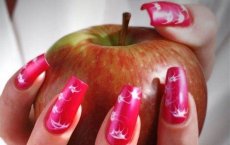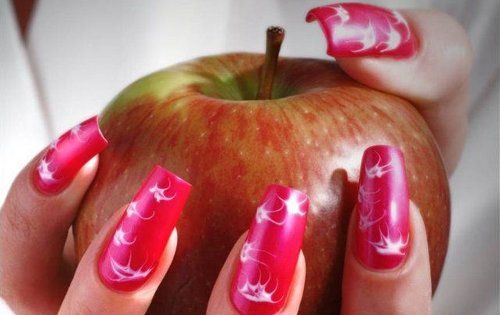Medical expert of the article
New publications
Nail vitamins
Last reviewed: 06.07.2025

All iLive content is medically reviewed or fact checked to ensure as much factual accuracy as possible.
We have strict sourcing guidelines and only link to reputable media sites, academic research institutions and, whenever possible, medically peer reviewed studies. Note that the numbers in parentheses ([1], [2], etc.) are clickable links to these studies.
If you feel that any of our content is inaccurate, out-of-date, or otherwise questionable, please select it and press Ctrl + Enter.

Nails need vitamins to be healthy, shiny and look beautiful. If the nail plate does not get enough vitamins, the nails will look very unattractive. What to do about it and where to get vitamins?
What does a nail consist of?

The nail plate, the one on which we make manicure designs and which we admire – beautiful and neat – consists of a substance called keratin. This is a protein substance that is present in the skin and hair. It is keratin that makes them shiny and elastic.
Keratin in the nail plate is not located in one layer, but in several. When there is enough keratin, the nail looks healthy. Between the keratin plates are located fat and water - also in layers. If there is not enough of them, the nail looks pale and nasty.
By the way, the nail plate has the ability to absorb liquid (water and everything that the hands come into contact with). If a person often washes dishes or floors without gloves, their nail plate may be brittle, thick and fragile. Therefore, when washing floors, dishes and other contact with water, be sure to use rubber gloves. It is always easier to protect nails than to treat them.
What vitamins might nails lack?
In the nail itself, in addition to keratin, there is also sulfur. And besides it - chromium, zinc, phosphorus, calcium, selenium. These substances, if they are lacking in the nail, must be taken from vitamin complexes.
If the above elements are missing from the nail plate, it becomes brittle and nail growth slows down.
To understand whether you have enough vitamins for your nail plate, pay attention to the growth rate of your nails. On average, they grow up to 1 mm per week (this is on the hands), and up to 0.25 mm on the feet.
The scales on the nail plate are renewed, but very slowly. You will have a new nail plate within six months.
What to do with nails if they break?
Nails break if you do not take many microelements from vitamin complexes and products. This happens to those who constantly torment themselves with low-calorie diets. Nutrition that lacks fats, proteins or carbohydrates makes nails brittle and does not allow them to grow normally.
With poor nutrition, you provoke a violation of blood circulation under the nail plate and normal metabolism, which does not contribute to the health of the nails. Balance your diet with the help of a nutritionist.
What are the reasons why nails can break?
This may be a genetic hereditary feature of the body. Then you need to see a doctor-pedologist - a specialist in the health and shape of nails. Or, if there is no such, then to a therapist and nutritionist - for the formation of a vitamin complex and a healthy diet. If their recommendations do not help, the nails will have to be extended.
If your nails have always been beautiful by nature, but now they suddenly start to break, this can be fixed with the right menu and multivitamins. The fact is that the body does not produce many vitamins itself, so they must be obtained from outside.
 [ 1 ]
[ 1 ]
Properties of vitamins for nails

If your nails lack vitamin A, they break and the nail plate feels very dry to the touch.
If the nails lack vitamin C, then dense to the touch areas appear on the nail plate in some places. Also, the nails exfoliate and can bend at the edges.
Lack of vitamin B for your nails means white stripes on the nail plate, and the nails practically do not grow. In addition, the surface of the cuticle is uneven and rough to the touch.
A lack of vitamins of group PP in the body is a dirty gray or yellow color of the nail plate, and also a dull one.
What to do to keep your nails healthy?
In addition to the recommendations above: protect your nails from harmful liquids by wearing gloves, enrich your diet with healthy foods, you also need the right vitamin complex.
Namely: vitamins A, E, D, C. You can get them from food products: fish, meat, eggs, hard cheeses, milk, fresh vegetables and fruits, nuts and seeds, berries, as well as from multivitamin complexes prescribed by a doctor.
The vitamins listed above complement each other's action very well, so it is better to take them in combination.
Stay healthy with the right vitamins and a sensible diet.

